Techniques of reading and learning
Reading in class1
Already in Late Antiquity, to sit in a class meant to read a text (lectio) under the guidance of a teacher. The notes of the teacher sometimes survive in the form of glosses (scattered notes) or a full commentary, treating different aspects of the text. Pictures of teachers in manuscripts generally look like this portrait on the right: a teacher is sitting behind a lectern and reading from a (large) book, and a group of students is sitting on the floor or on benches in front of him, having in front of them a (smaller) book or wax tablets to take notes.

http://initiale.irht.cnrs.fr/decor/99412
On the page, these notes and commentaries were organised around the text in particular fashions: the lay-out varies in relation to the nature and the extent of the commentary, and of course, also according to the size of the page and the margin. Here, for example, we see three books side-by-side: 1. Leiden, UB, VLF 48, f. 31r (307 mm high): an example of an extensive commentary added in the margin; 2. Leiden, UB, BPL 1925, f. 139v (only 135 mm high): an example of a text with a narrow margin and only occasional notes; 3. Paris, BnF, lat. 17806, f. 164v (300 mm high): an example of a lay-out in columns to give different sets of commentary a designated space on the page.
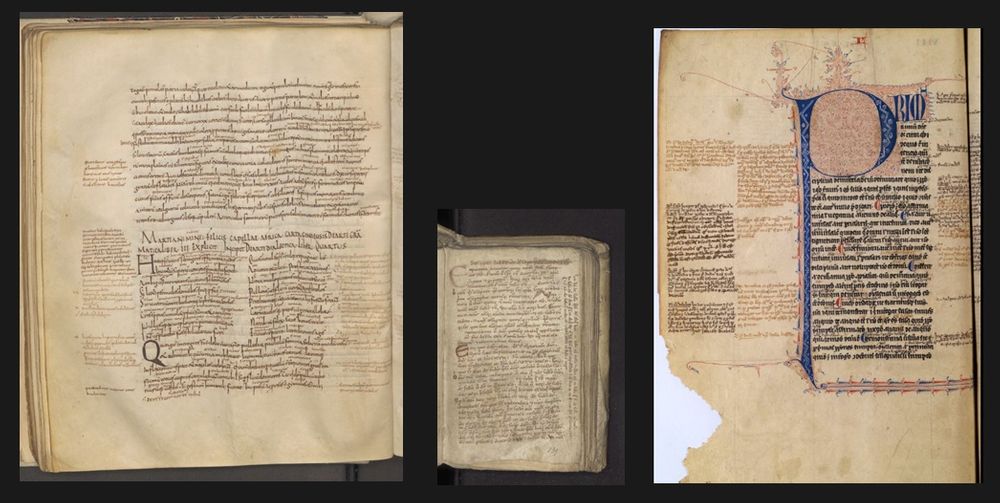
(1) http://hdl.handle.net/1887.1/item:1618282; (2) http://hdl.handle.net/1887.1/item:877637; (3) https://gallica.bnf.fr/ark:/12148/btv1b525053525
Lay-out: Organized ...
The page can be very well organized: neat spaces in the margin and in between the lines offer space to enter notes and glosses that are copied from one manuscript to the next. Marks (called ‘signes de renvoi’ or ‘tie-marks’) link the note in the margin to the specific place in the main text to which it belongs.


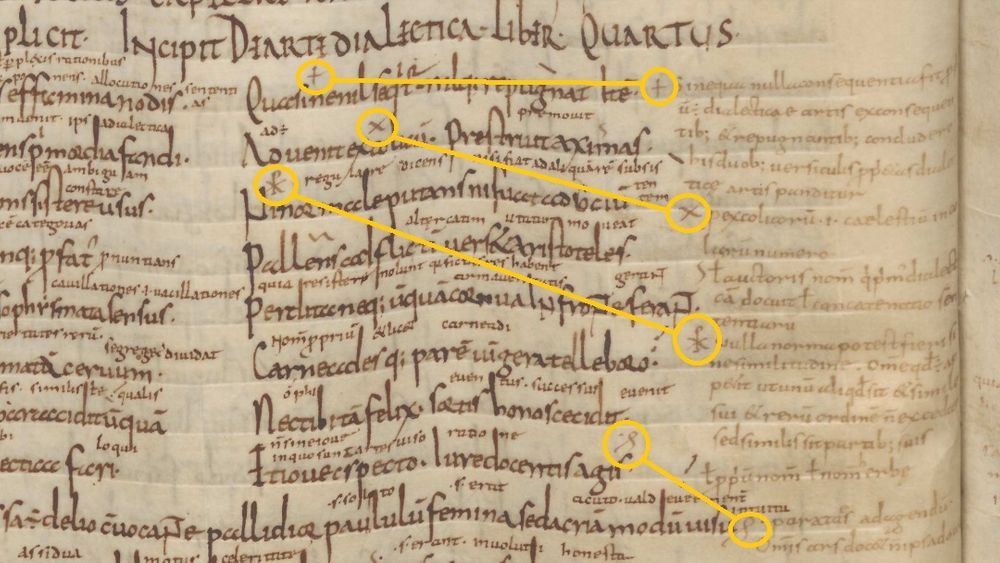

http://hdl.handle.net/1887.1/item:1618282
... versus messy
Pages can also be completely overgrown with glosses and notes. Notes can end up on the wrong page, or be added on separate inserted slips of parchment. A page can be so densely glossed that it is difficult to see where one note ends, and the other begins, or to which phrase they belong.
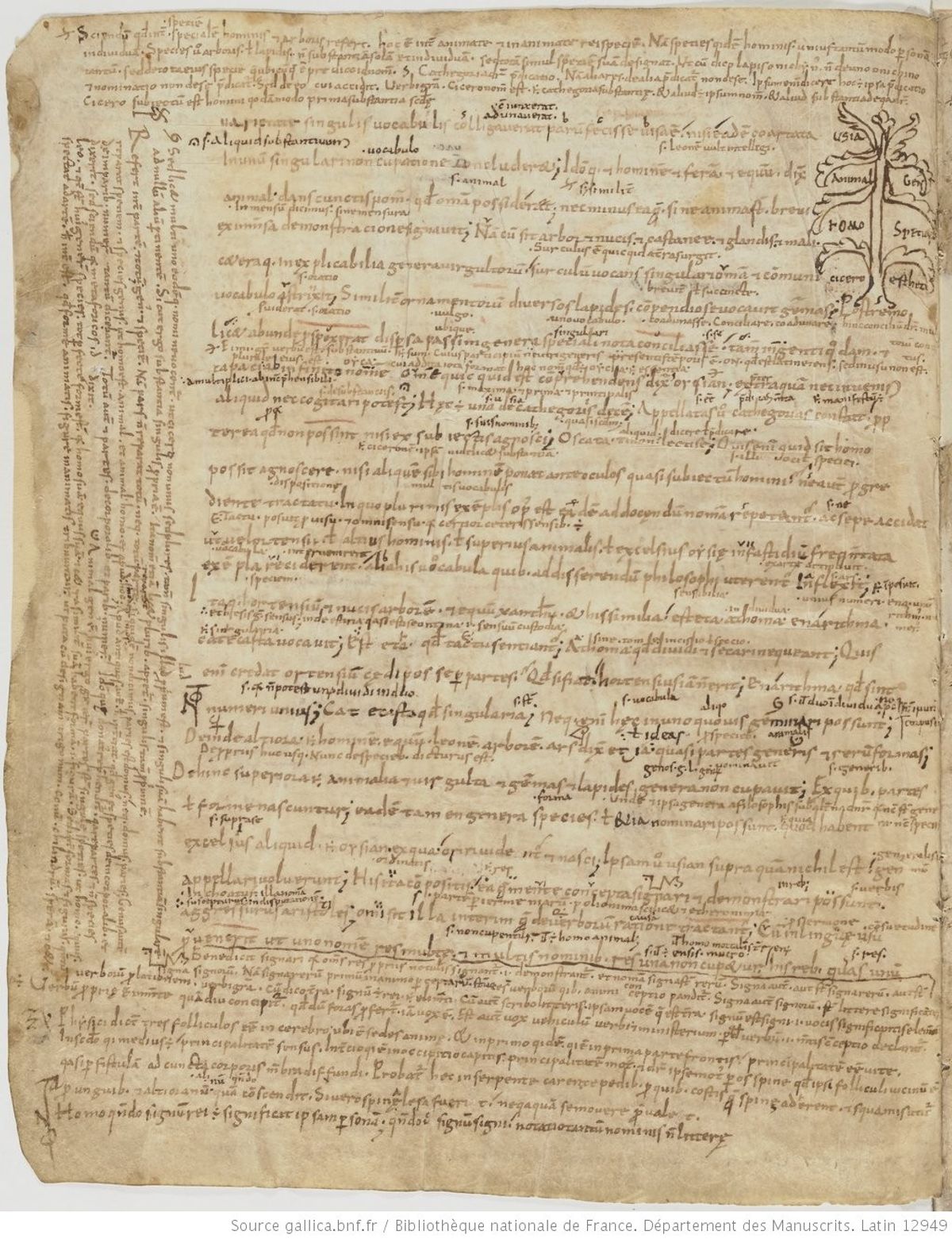

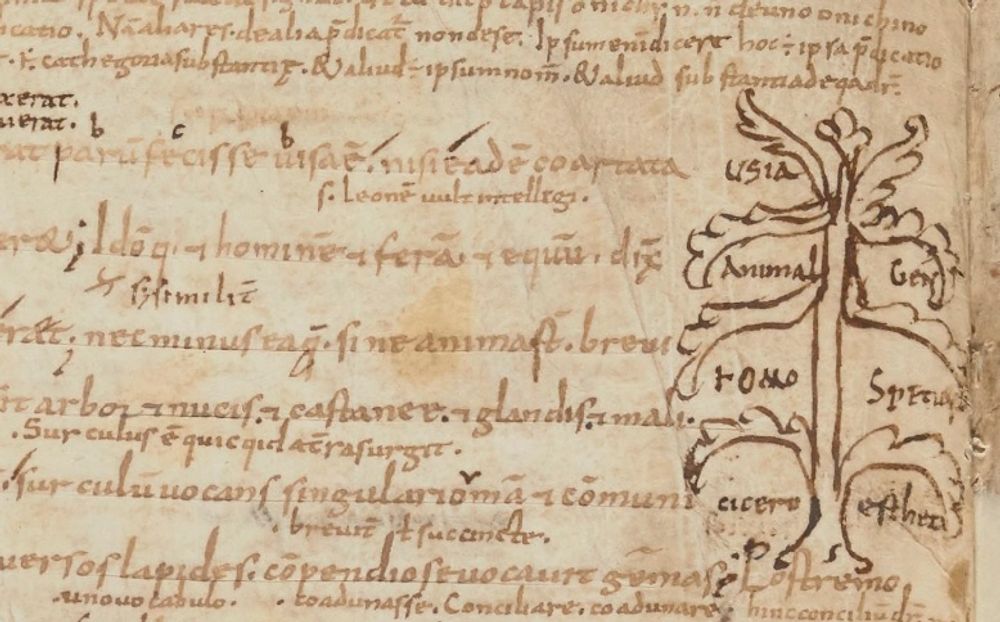



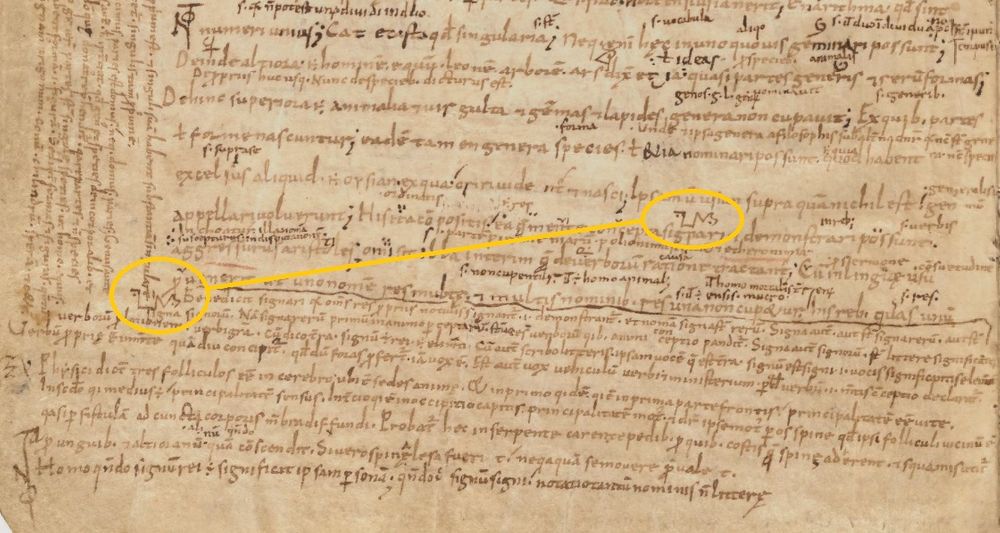

https://gallica.bnf.fr/ark:/12148/btv1b10542356v
https://gallica.bnf.fr/ark:/12148/btv1b10542356v
https://gallica.bnf.fr/ark:/12148/btv1b10542356v
Heavily of lightly glossed
On the page, a wealth of notes can be added, but also just a few. This can even vary per page: in the same manuscript, one page is completely filled, while the other is empty. Typically, the first (few) pages are heavily annotated, but this activity then dies out quickly. An example is found in this manuscript: Paris, BnF, Lat. 2788, which contains a copy of Aristotle’s Categories (in Boethius’ translation). The manuscript was made in Fleury around the year 1000. At the opening of the text, on fol. 49r, long notes are added, but there are less, already, on fol. 50v and the margins of fol. 52r are virtually empty.
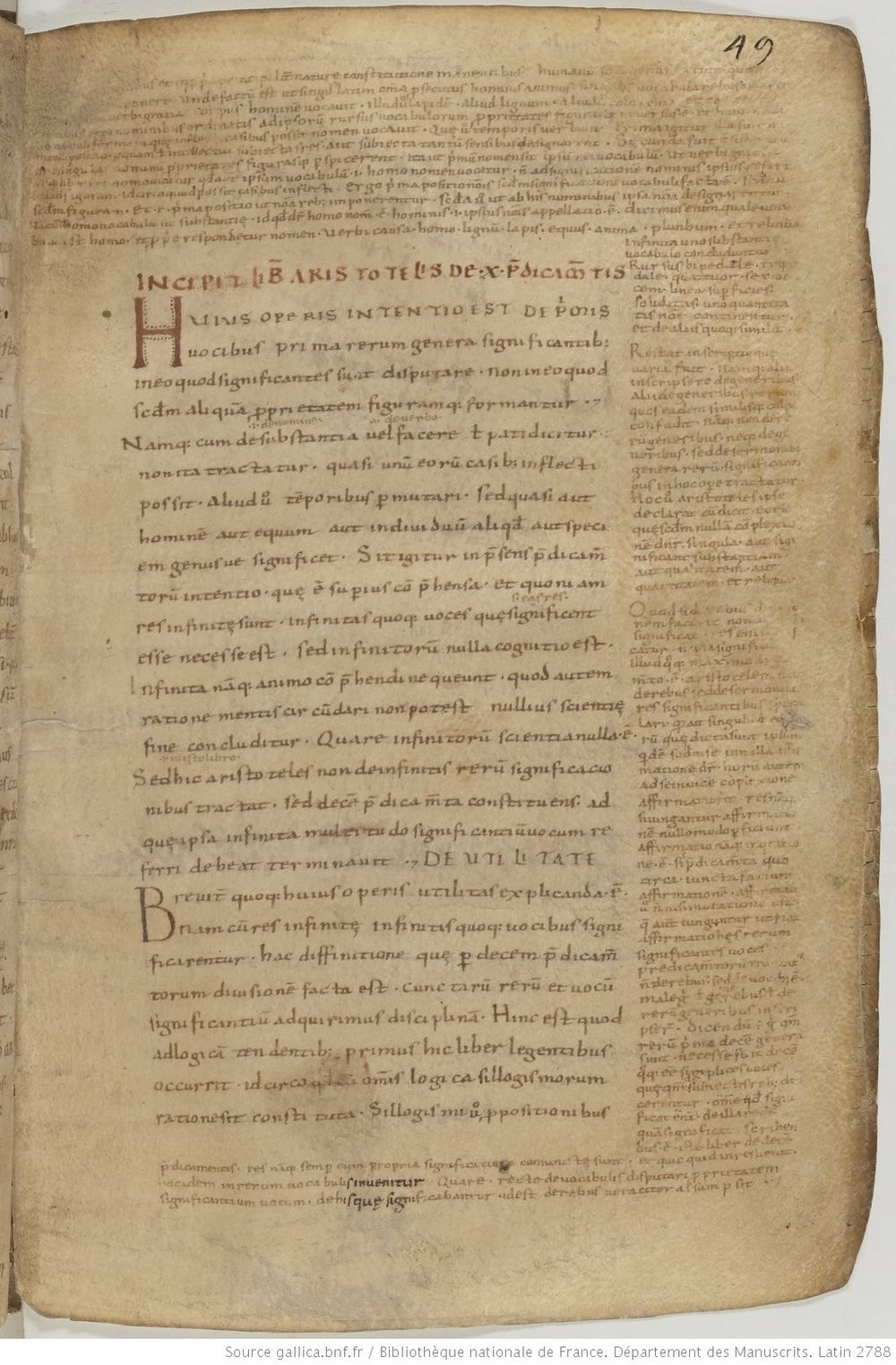
https://gallica.bnf.fr/ark:/12148/btv1b10541978h

https://gallica.bnf.fr/ark:/12148/btv1b10541978h
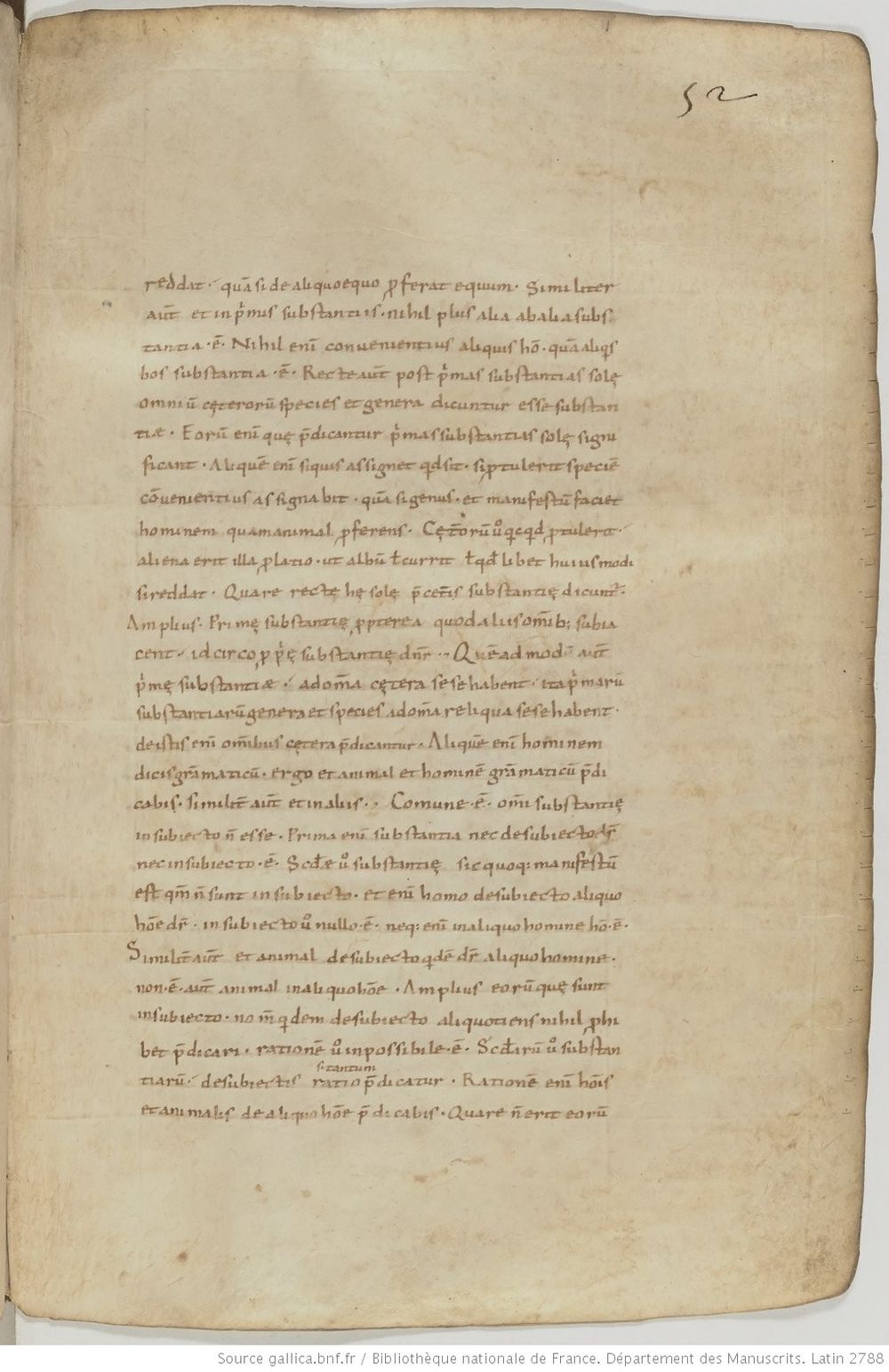
https://gallica.bnf.fr/ark:/12148/btv1b10541978h
Some texts were so fundamental to the curriculum, that their commentaries became settled texts in themselves, and in their turn entered the curriculum. The page was designed to incorporate both text and commentary, for example by providing for a grid to accommodate the commentary, or separate writing lines in the margin. Sometimes the text in the margin also took on the appearance of a separate, continuously written text, just executed in a smaller font. Here in manuscript Paris, BnF, Lat. 7900A, f. 113r (a copy of Martianus Capella’s De nuptiis with the commentary of Remigius of Auxerre, we can see how the balance between text and commentary can be extreme: the main text of Martianus Capella’s De nuptiis is found in the narrow column on the left, while Remigius of Auxerre’s commentary occupies the broad column on the right, where it is written as a continuous text.
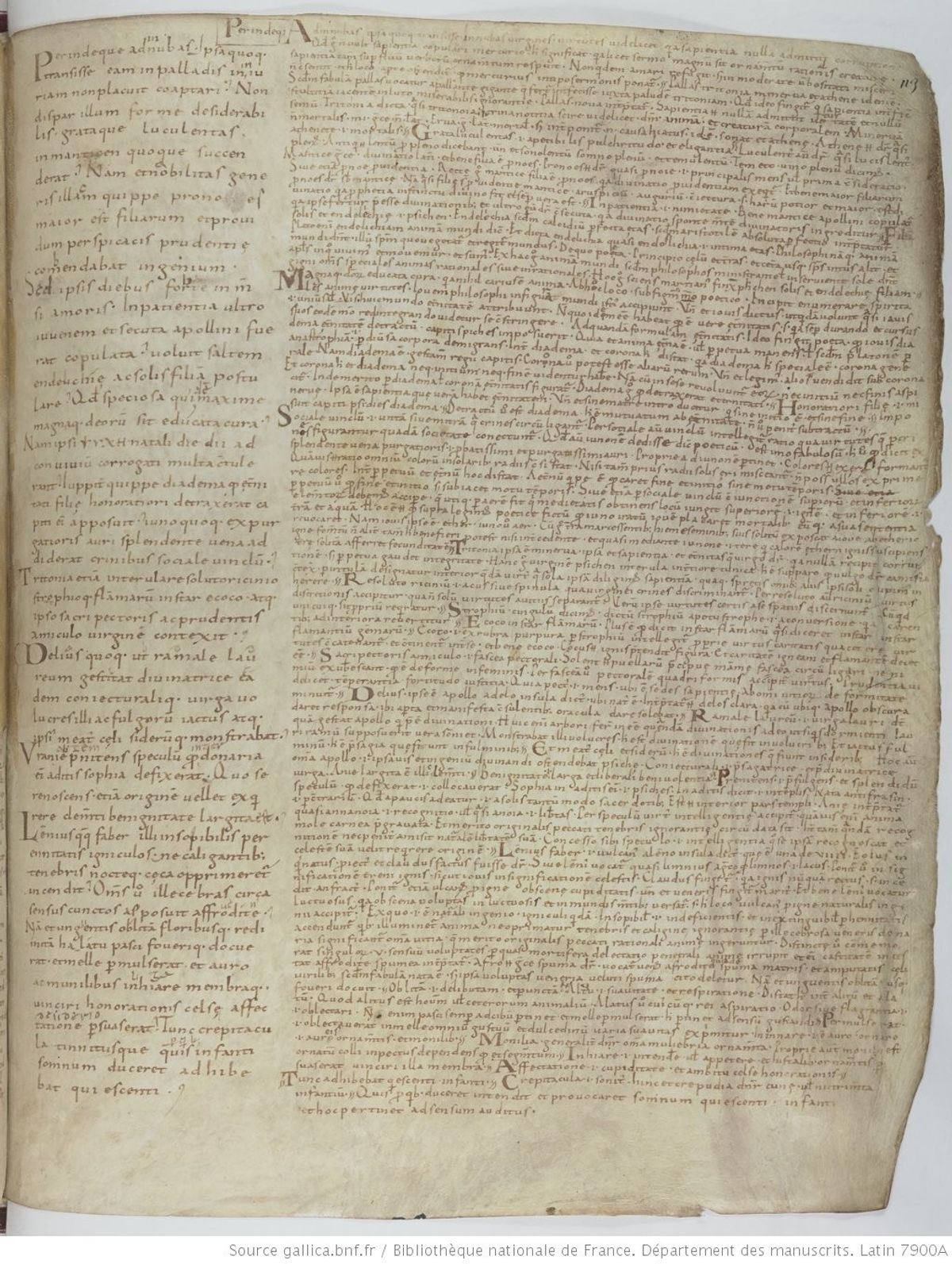

What do the notes do?
In modern information theory, good information management strives for four goals, i.e. the four s’s of information management: store, sort, select and summarize information. In medieval manuscripts, these four s’s are also happening in the margins. The notes are there, generally speaking, to help the reader, and storing, sorting, selecting and summarizing are important strategies to help him/her process the material.

http://initiale.irht.cnrs.fr/codex/10419/4348
In manuscripts, we can thus distinguish multiple functions of marginal notes and various techniques to manage information. The list of functions and techniques is long. Here we illustrate six general examples:
(1) the glosses and notes call attention to certain things,
(2) summarize and highlight the structure of the text,
(3) explain and expand,
(4) refer to different authorities and compare,
(5) visualize material in lists, diagrams and schemes,
(6) give the reader some guidance in how to interpret certain things.
1. Attention please!
For calling attention to certain things in the tekst, multiple kinds of signs were used: nota signs, asterisks, pointing fingers (maniculae), pointing faces, etcetera. In our manuscript portraits we find many examples, for example in Leiden, UB, BPL 25; Leiden, UB, BPL 144; Paris, BnF, 11127; and Paris, BnF, Lat. 17806.
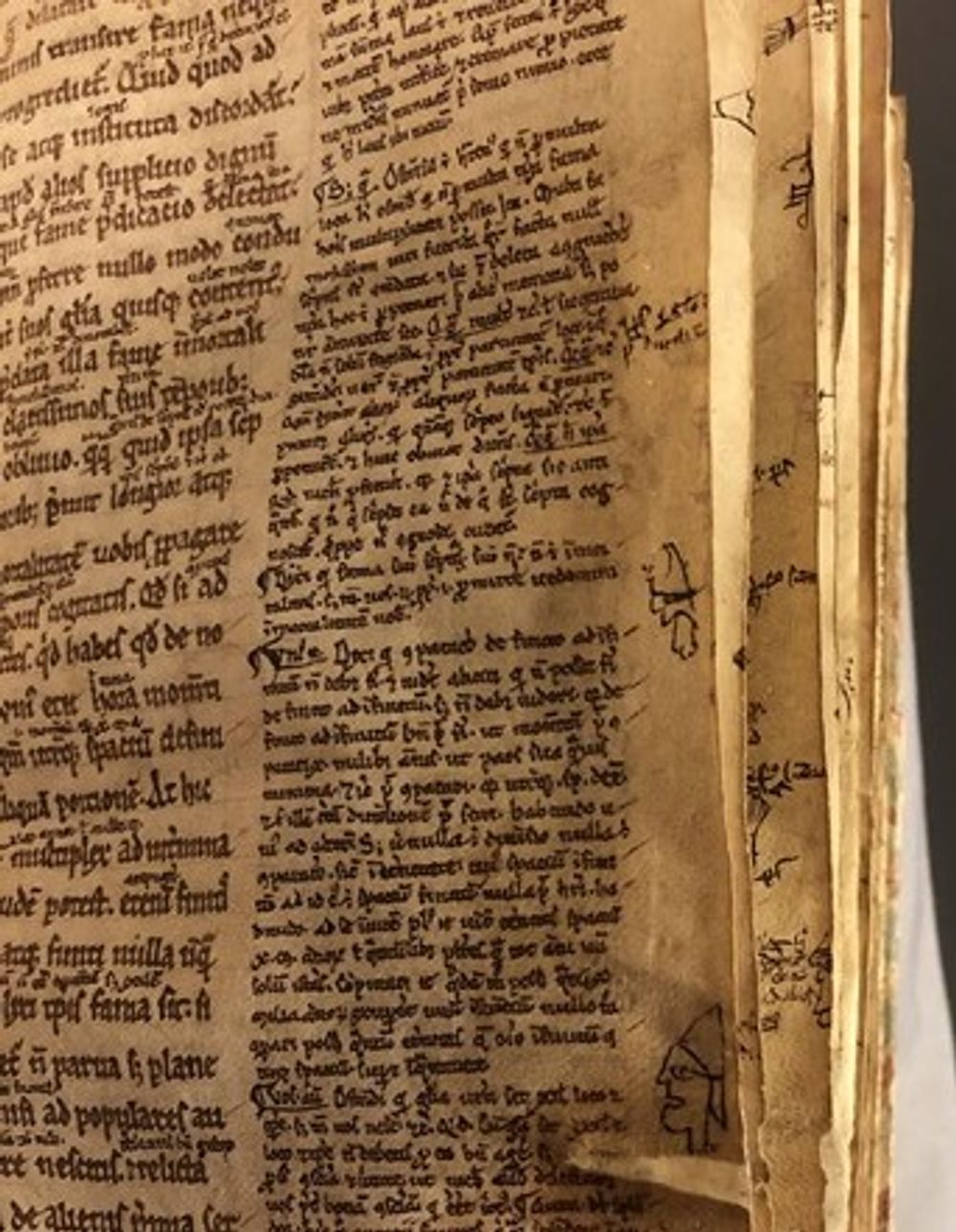
http://hdl.handle.net/1887.1/item:2356986

https://gallica.bnf.fr/ark:/12148/btv1b525053525
2. Summarize and structure
It is clear that readers were keen on summarizing the text and structuring it, so that they could store key parts in their memory and so that they could re-find things in books they were consulting. Keywords, or marginal indices, and notes relating to the structure of the text were used to achieve these things. Examples are found in Paris, BnF, Lat. 11127 and Leiden, UB, BPL 25.
In Paris, BnF, Lat. 11127, f. 49r, for example, we see how a marginal index of topics was created in capital letters in the margin, and how the start of a new book was announced when it was not clear from the text itself (the green blocks are ours).
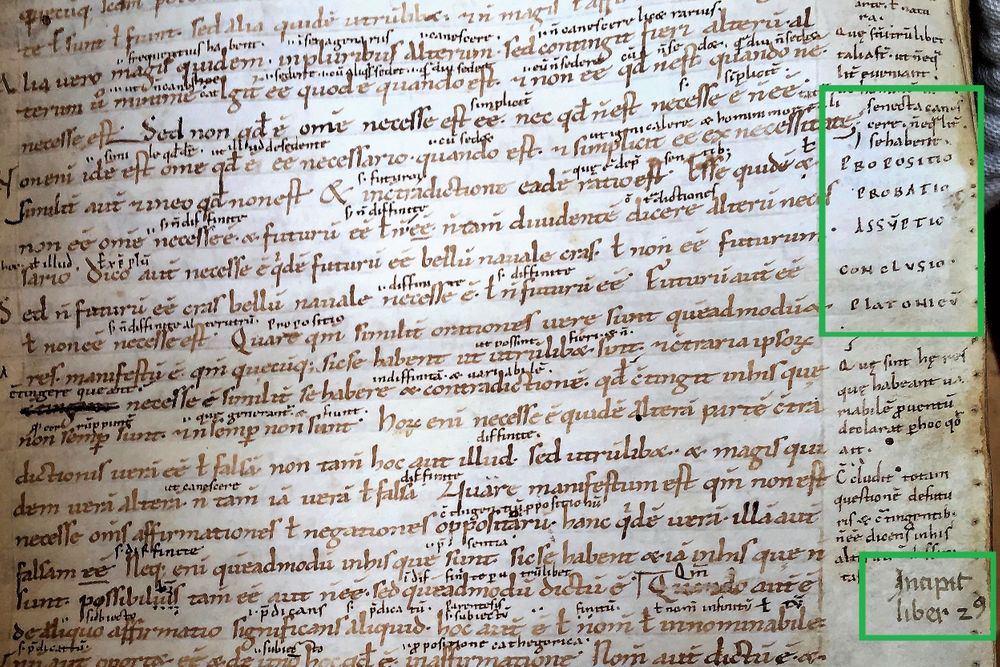
https://gallica.bnf.fr/ark:/12148/btv1b90680770
In Leiden, UB, BPL 25, f. 6v, several techniques are used to clarify the dialogue structure of the text (the blocks are ours).

http://hdl.handle.net/1887.1/item:1617684
3. Explain and expand
The main function of commentary and notes probably is to explain the content of the main text, so that it makes sense to the student or reader. A technique that was often used to explain was to expand: to include new information that was perhaps already known from other contexts, and make the connection. Examples abound in the manuscript portraits presented here, e.g. in Leiden, UB, BPL 88, or in the Paris manuscripts BnF, Lat. 7900A and Lat. 12949, where slips are added into the binding to add more relevant material.
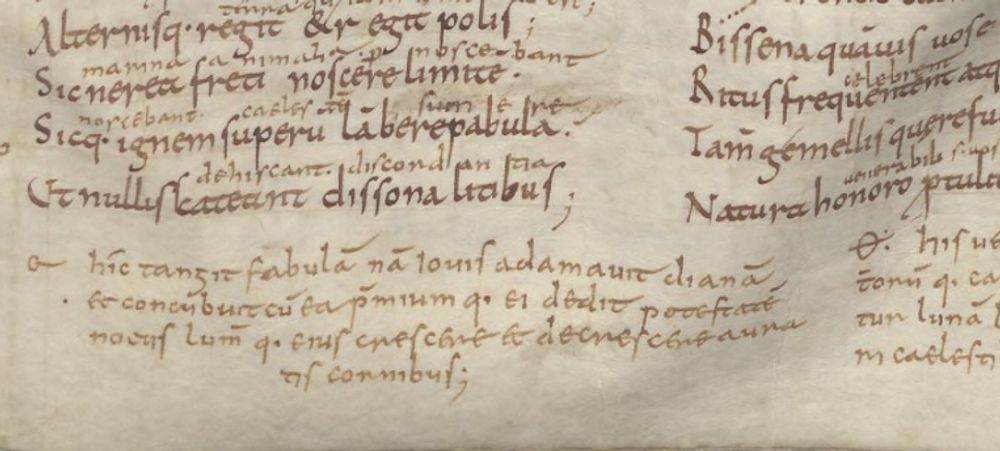
http://hdl.handle.net/1887.1/item:2028417
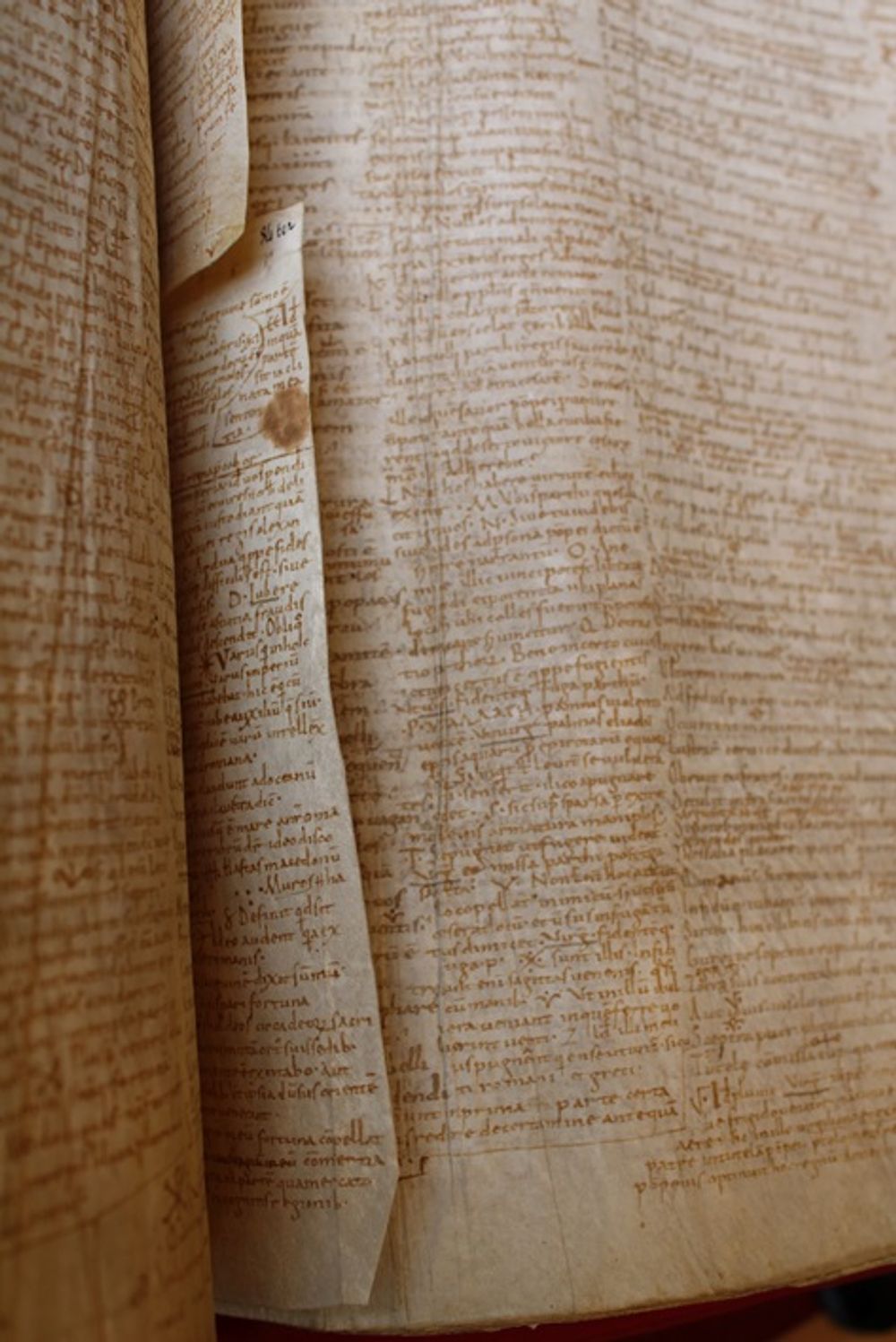
https://gallica.bnf.fr/ark:/12148/btv1b10546779x
4. Comparison
The technique of expanding texts by connecting them to others automatically also brought in another technique: that of comparison. In one book, it was pointed out, the technical term for something could be x, while in another it could be y or z. In one book, a certain concept could be divided up into x sub-divisions, in another it could be a different number. Examples are found in Leiden, UB, VLF 48 and Leiden, UB, BPL 88. In Leiden, UB, VLF 48, f. 92v, for example, diagrams are added that visualize how the planets travel through the cosmos on their orbits according to three different authorities: Martianus, Platonists and Pythagoreans.
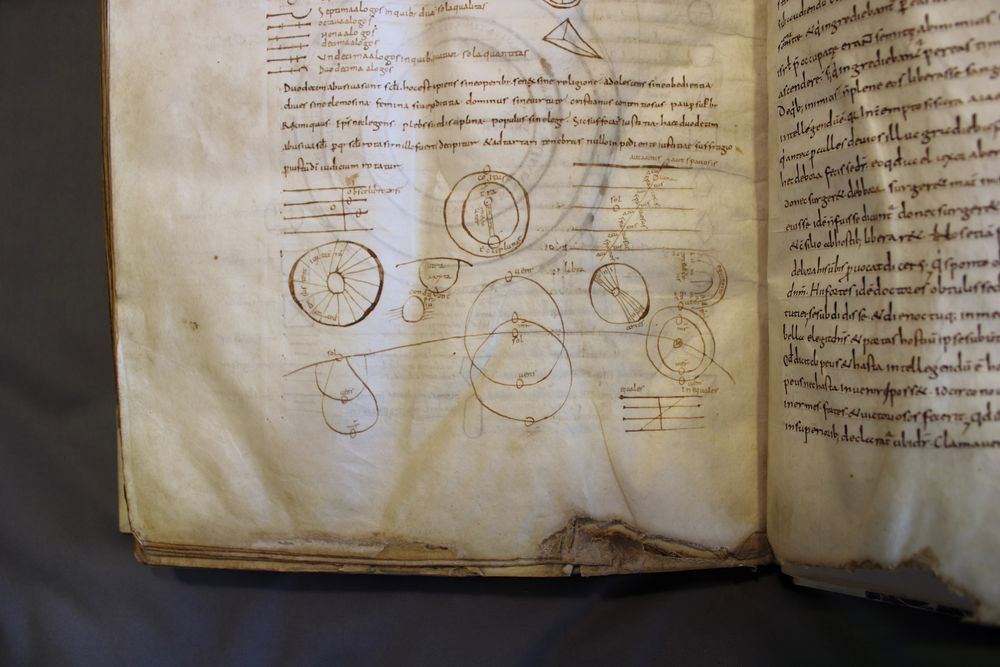
http://hdl.handle.net/1887.1/item:1618282
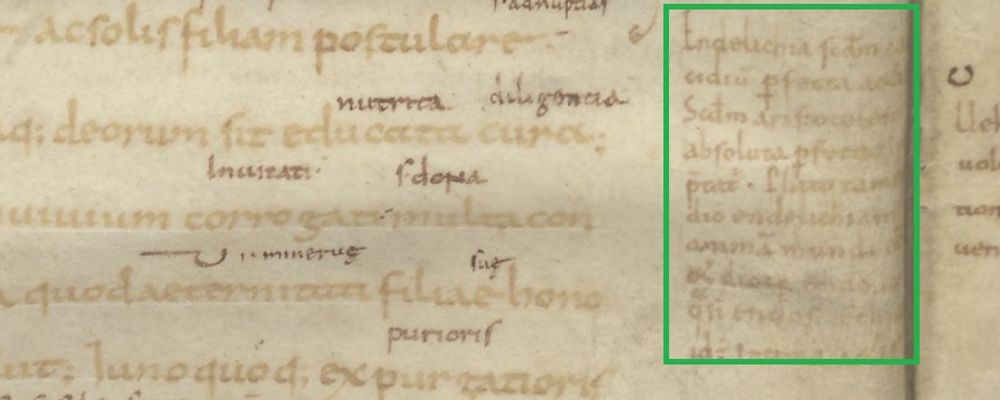
http://hdl.handle.net/1887.1/item:2028417
5. Visualize in diagrams and schemes
The technique of visualizing material in order to make it memorable, to clarify the structure and to make a summary of all the text’s components is very common in almost all of the manuscripts we portray here. Diagrams and schemes are explored more fully here, but examples abound in: Leiden, UB, VLF 48; Leiden, UB, BPL 25; Leiden, UB, BPL 84; Leiden, UB, GRO 22; Leiden, UB, VLQ 103; Paris, BnF, Lat. 17806 and Paris, BnF, Lat. 12949.
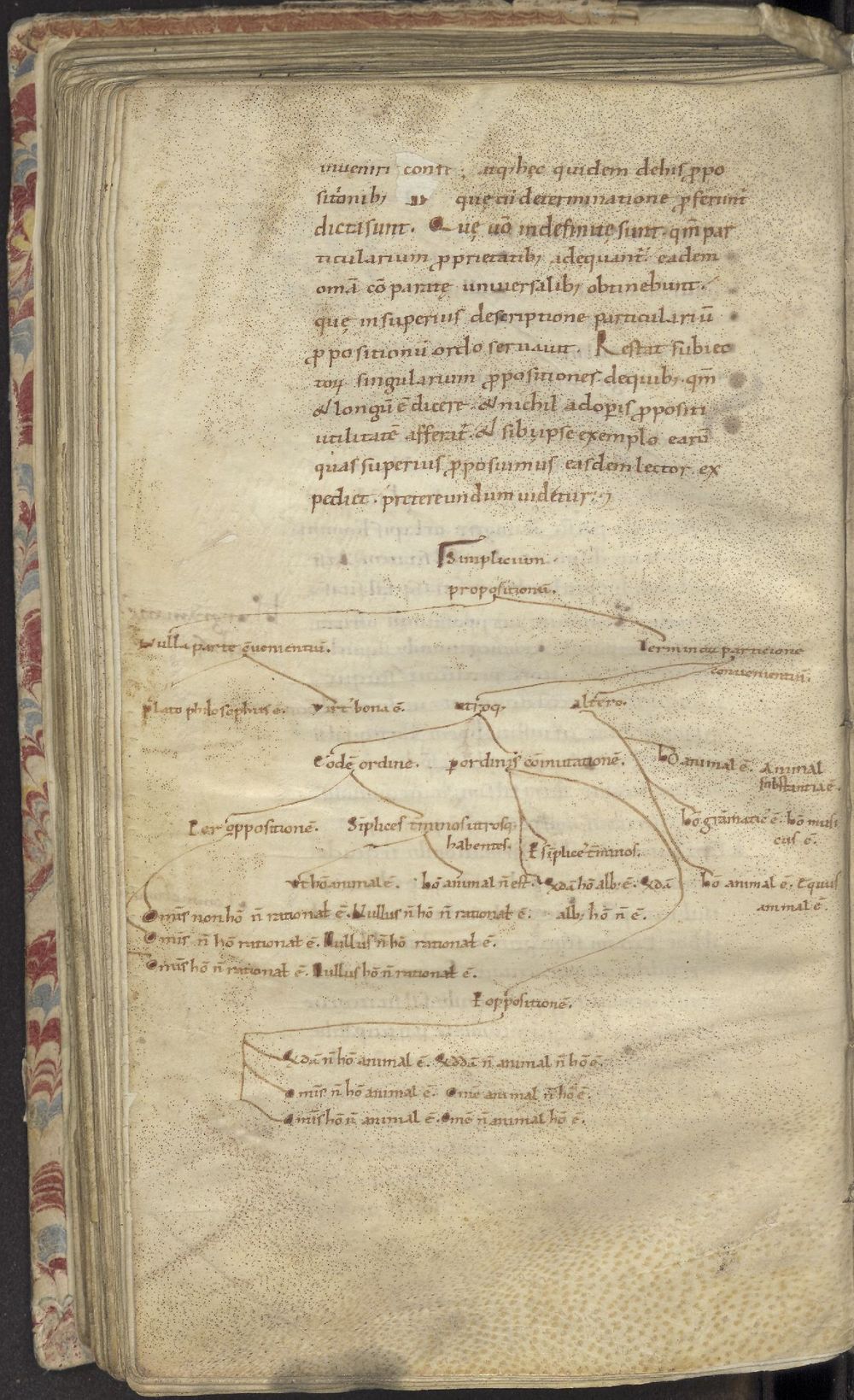
http://hdl.handle.net/1887.1/item:2348775

http://hdl.handle.net/1887.1/item:1668135
6. Guide the reader
A final function of marginal notes listed here is that of providing guidance to the reader as to how to interpret certain things in the text. There are, for example, instances where the annotator wishes to warn the reader that something should be read with care, or with suspicion. The annotator sometimes exercised quite compelling guidance from the margin, to make sure that the reader would not misunderstand. An example is found in Paris, BnF, lat. 2853, f. 7r: here we see an eleventh-century reader responding with exclamations of horror of what he is reading in the text: “HEU, MALE, PESSIME”! (“woe! bad! the worst!”).
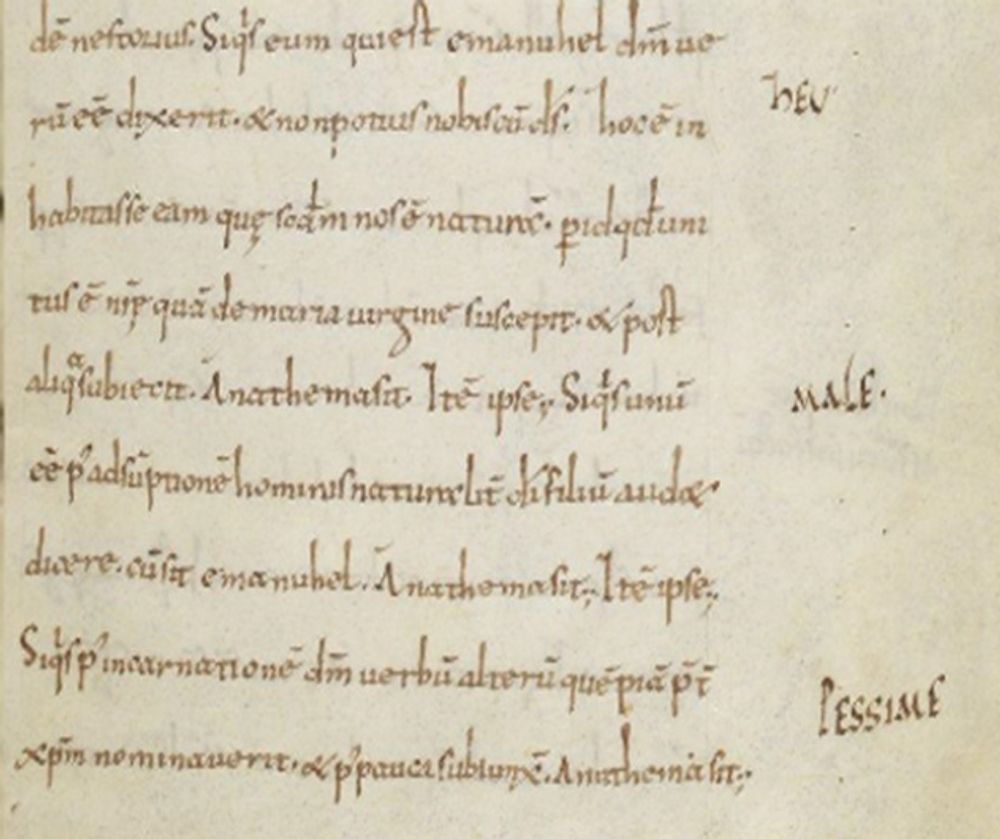
https://gallica.bnf.fr/ark:/12148/btv1b8572244q
Sources used for this contribution:
- Mariken Teeuwen and Irene van Renswoude (eds.), The Annotated Book in the Early Middle Ages. Practices of Reading and Writing, Brepols, 2017 (Utrecht Studies in Medieval Literacy 38)
- Mariken Teeuwen, “Voices from the Edge: Annotating Books in the Carolingian Period”, in The Annotated Book, 13-36
- James E.G. Zetzel, Marginal Scholarship and Textual deviance. The ‘Commentum Cornuti’ and the Early Scholia on Persius, London, 2005 (Bulletin of the Institute of Classical Studies Supplement, 84)
- Louis Holtz, “Le rôle des commentaires d’auteurs classiques dans l’émergence d’une mise en page associant texte et commentaire”, in Le commentaire entre tradition et innovation, Marie-Odile Goulet-Cazé (ed.), Vrin, 2000, 101-117
Contribution by Mariken Teeuwen.
Cite as, Mariken Teeuwen, “Techniques of reading and learning”, The art of reasoning in medieval manuscripts (Dec 2020), https://art-of-reasoning.huygens.knaw.nl/techniques. ↑


 Next Read:
Next Read: